
|   |

|   |
India featured - Padma Jayaraj, Thrissur e-mail: padmajayaraj@gmail.com Photos courtesy Vivek Vasanth Nimbalkar August 21, 2012 Independence Day celebrations in Mumbai exhibited a visual essay at Jehangir Art Gallery. The week long exhibition (Aug 14 – 20, 2012) by Vivek Vasanth Nimbalkar, a Pune-based artist, was a heart-warming treat. The painting exhibition features India in a mute poetry. At a time when the print and TV media highlight the horror and glory, here is a visual feature that paints India in its everyday rhythm in its rural and urban settlements. 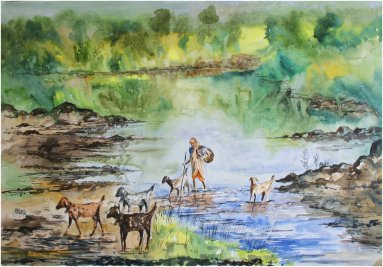
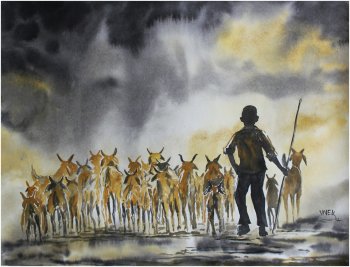
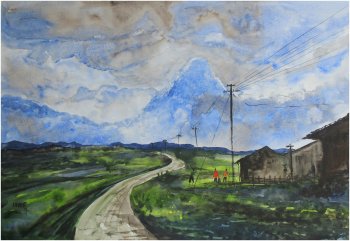
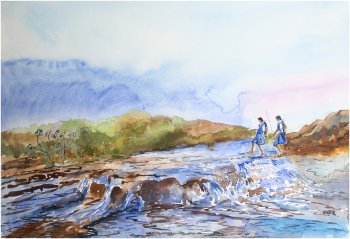
The water colour paintings in pastel shades are the charming village scenes, agrarian in ethos, with panoramic views of fields and rivers that mirror the skyscape and the landscape. They look like cinematic shots aesthetically fulfilling, amazingly natural, yet artistically wrought. The soul and spirit of India lives here in her villages, where bullock carts are yet part of life, where men and women live among animals and birds in the lap of nature. Village settlements are dominated by huts like an island in the middle of expansive plains. When the age old rhythm of an agrarian community is the unheard melody that emanates from these paintings, realistic sketches of everyday life in towns and cities are depicted in somber colours, which is another face of India. Humble people toiling among cars and bicycles in towns, tall buildings that tower over cityscapes seem joyless in dark hues. The pastoral scenes are juxtaposed to narrow lanes amidst skyscrapers choked with motor vehicles. Well dressed city people stand apart from the rural folk who live among domesticated animals. Temples on the river bank are another series. How can India be complete without her religious beat! Spirituality has brought waters to the plains of India in its mythical times. Ever since, the Ganga has filled each water body of the subcontinent in its racial memory. Here, the temple bells have resonated the chanting of the Ganga where rituals are a mode of worship, a way of life. Even when the paintings seem to be a real representation of the natural, the alchemy of the artist transmutes them to art. The dark rain clouds over the golden field, ripe with Midas touch is a beautiful painting in contrasting colours, yet it sends a gloomy message: of our troubled times of erratic rains, the havoc created by untimely flood, the ominous climate change. Roads and electric wires span the miles bypassing development for the poor villagers. 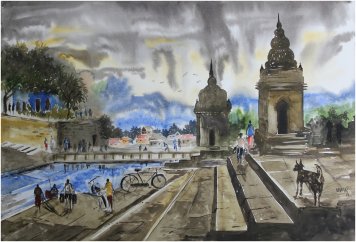
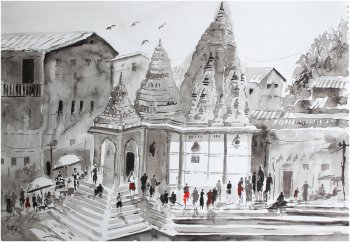
We feel the need to uplift the toiling masses, especially in the context of our Independence Day. Perhaps, the artist wants the entire show to be his message. “You must’ve travelled across India,” I murmured in appreciation. “The scenes are pictures of landscape in and around Pune,” smiled the artist in all humility and pride. But, to one who has travelled from Rishikesh to Kanyakumari, from Mumbai to Kolkata, the paintings feature India, the country in its entirety: the geography of its settlements, its social life in rural and urban sectors, its soul and spirit in its religious rhythms. Padma Jayaraj is a freelance writer and a regular contributor to www.narthaki.com |